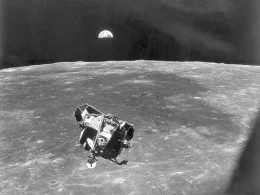The agricultural industry has come a long way since the first seeds were planted in the ground. With advancements in technology, farmers are now able to produce crops more efficiently and sustainably than ever before. From drones that monitor crop health to genetically modified seeds that resist pests, agtech is revolutionizing the landscape of farming. In this blog post, we’ll explore how science is changing agriculture and what innovations we can expect in the future. Get ready to discover how technology is transforming our food system!
The current state of agriculture
Agriculture is the backbone of our food system, providing sustenance for billions of people across the globe. However, today’s agriculture faces a number of challenges that threaten its sustainability and ability to feed an increasingly populous world.
One major issue is climate change, which has brought about unpredictable weather patterns and extreme temperatures that can damage crops. Another challenge is water scarcity, as many parts of the world are experiencing droughts or decreasing water supplies due to overuse.
In addition to these environmental concerns, farmers also face economic pressures such as rising costs for inputs like fertilizers and equipment. With food prices remaining low in many regions, it can be difficult for farmers to make a profit while maintaining sustainable practices.
Despite these challenges, there are many innovative solutions being developed within the agtech industry that offer hope for a more sustainable future. Through advancements in precision agriculture techniques and new technologies like vertical farming systems and gene editing tools, we may be able to overcome some of these obstacles and create a more resilient global food system.
How agtech is changing the landscape of farming
The advent of agriculture technology, or agtech, is changing the face of farming as we know it. With technological advancements in various fields, farmers today have access to cutting-edge tools that can help them increase crop yields and optimize their operations.
One way in which agtech is changing the landscape of farming is through precision agriculture. This involves using sensors and other technologies to collect data on soil moisture levels, temperature, humidity and other factors that influence plant growth. This data can then be used to create highly accurate maps of farm fields which allow farmers to tailor their management practices for specific areas. Precision agriculture has been proven to reduce waste while increasing efficiency and yield.
Another area where agtech is making a difference is in the use of drones for crop monitoring. Drones equipped with cameras or multispectral sensors can fly over crops at regular intervals, capturing detailed images that reveal changes in plant health and growth patterns over time. These images are analyzed by machine learning algorithms which give farmers insights into what might be affecting their crops.
In addition, there are now software platforms built specifically for agricultural purposes like weather tracking apps and market prediction software enabling more informed decisions whilst mitigating risk involved when planning out how much supplies they need versus demand allowing them greater success within markets trends.
Agtech may just be starting but its potential benefits seem endless from reducing workloads to saving massive amounts on input costs; this emerging industry will continue shaping our future food systems as well as driving innovation throughout this sector!
The future of agtech
The future of agtech is bright and exciting, with new developments constantly emerging. One key trend is the use of drones in agriculture. Drones can provide farmers with a bird’s-eye view of their crops, enabling them to detect issues such as nutrient deficiencies or pest infestations before they become serious problems.
Another area where agtech is likely to have a big impact in the future is precision agriculture. This involves using data analytics and machine learning to optimize farming practices by analyzing soil health, weather patterns, and other factors that affect crop growth.
In addition, we are likely to see more automation in farming operations. Robots are already being used for tasks such as planting and harvesting crops, but as technology advances we can expect to see even more sophisticated machines taking on a wider range of tasks.
It’s clear that agtech has enormous potential for transforming the way we produce food. By enabling us to farm more efficiently and sustainably, it could help us meet the challenges posed by population growth and climate change while also improving food security and reducing waste.
How farmers are using technology to innovate
Farmers are using technology to innovate in a number of ways. One of the most significant is precision agriculture, which involves the use of sensors and data analytics to optimize crop yields while minimizing waste.
For example, farmers can use drones to map their fields and identify areas that need more or less water, fertilizer, or other inputs. They can also use GPS-guided tractors to plant seeds with greater accuracy and consistency.
Another area where technology is transforming farming is livestock management. Farmers can now track individual animals using RFID tags or other sensors, enabling them to monitor health and behavior patterns in real-time. This information can be used to improve feed efficiency, reduce disease risk, and increase overall productivity.
Farmers are increasingly relying on digital platforms for sourcing inputs such as seed, fertilizers or machinery rentals from a single location without having any physical visits thereby reducing time and cost requirements.
Technology has allowed farmers around the world to become more efficient by optimizing resources like land usage while improving yield quality which ultimately contributes towards sustainable agricultural practices.
Conclusion
The advancement of technology has brought about a significant change in the agricultural sector. Agtech has made it possible for farmers to produce more food with less land and input while reducing environmental impact. With the continued development of innovative technologies such as drones, sensors, artificial intelligence (AI), and machine learning algorithms, we can expect further transformation in agriculture.
Farmers are now empowered to make data-driven decisions that improve their crop yields and quality using advanced monitoring systems. By leveraging satellite imagery coupled with AI-powered analytics tools, they can gain insights into soil health parameters like moisture content and nutrient levels.
The future of agtech holds great promise for addressing some critical challenges facing agriculture today – from labor shortages to climate change impacts on farming production. Although there remain certain limitations such as high costs associated with acquiring new agtech solutions or lack of access to reliable broadband internet in rural areas – these obstacles are being addressed through government funding initiatives aimed at supporting innovation in this field.
In summary, AgTech is revolutionizing agriculture by creating new opportunities for farmers to increase productivity while reducing environmental impact. The future looks bright; we anticipate even more experimentation with cutting-edge technologies that will transform how farming is done all over the world!












